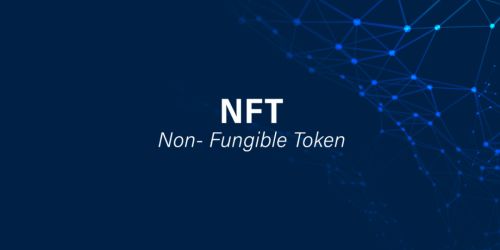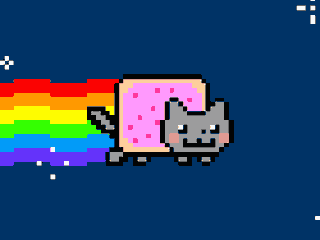- English
- Español
- Português
- русский
- Français
- 日本語
- Deutsch
- tiếng Việt
- Italiano
- Nederlands
- ภาษาไทย
- Polski
- 한국어
- Svenska
- magyar
- Malay
- বাংলা ভাষার
- Dansk
- Suomi
- हिन्दी
- Pilipino
- Türkçe
- Gaeilge
- العربية
- Indonesia
- Norsk
- تمل
- český
- ελληνικά
- український
- Javanese
- فارسی
- தமிழ்
- తెలుగు
- नेपाली
- Burmese
- български
- ລາວ
- Latine
- Қазақша
- Euskal
- Azərbaycan
- Slovenský jazyk
- Македонски
- Lietuvos
- Eesti Keel
- Română
- Slovenski
- मराठी
- Srpski језик
Take you to understand NFT
2022-01-05
Art works are sold at sky-high prices, virtual avatars are looted, well-known companies and sports stars enter the "platform", and the associated concept "meta universe" skyrocketed... The popularity of NFT in 2021 is staggering, and many users are calling it straight "can not read".
This article sorts out some knowledge points related to NFT. I believe it can answer many of your questions about NFT. If you want to know, please continue to read.
What is NFT?
The full name of NFT is Non-Fungible Token, which is interpreted as a non-fungible token. NFT is considered to be a unique digital product, which is different from tokens that can be exchanged equivalently, such as Bitcoin and Ethereum. It is also understood as the carrier of digital certificates. The objects of NFT are not limited to works of art, but also include virtual pets, celebrity cards, game equipment, records, etc.

The simplest understanding may be to think of it as a digital version of the various "certificates of authenticity" that are ubiquitous in the real-world art and collection market.
The difference is that NFT does not use a certificate, but an encrypted smart contract and a distributed blockchain (most of them are based on Ethereum since this time) to prove who owns each one. Unique real tokens.
Just like cryptocurrency, these contracts are also verified by the collective and distributed work of miners. The work of these miners allows the entire system to maintain its calculations (the electricity consumed will generate a lot of carbon emissions, which is annoying). honest.
Like cryptocurrencies, these NFTs can be directly sold and traded in any number of markets without any centralized control structure to regulate transfer rules.
The difference between NFT and ordinary cryptocurrency lies in the uniqueness of each token. Cryptocurrencies like Bitcoin are indistinguishable from each other and their value is the same. Every bitcoin can be traded or distributed like any other bitcoin (that is, bitcoin is fungible and homogeneous).
The "non-homogeneity" of NFT means that each token represents a unique entity with different values, and it cannot be divided into smaller units.
Just like anyone can print their own certificate of authenticity (or just like anyone can create their own cryptocurrency and try to become the "next bitcoin"), anyone with a little technical knowledge can start to mint themselves Unique NFT. Etherscan currently lists more than 9,600 different NFT contracts, each of which has its own trust network, representing and tracking its own collection of digital goods.
Why do I need NFT?
In the digital world, all content is reproducible. If you want to forward an image to 10 people, just keep the original image and create 10 new copies at the same time.
However, blockchain technology does not allow people to copy the cryptocurrency NFT, nor does it allow people to spend the same token twice.
Any unique digital “asset” can carry the NFT label. Under the current market boom, these NFTs can obtain high valuations in a short period of time, and the asset range is also all-encompassing, such as the new release of the rock band Kings of Leon. Albums, various cute cartoon cats (mostly in the name of digital art), or many other things in between.

NFT is essentially the only label for assets, and the value of NFT should not increase just because of the label.
If you have to make a comparison, NFT may be very similar to the unique barcode affixed to the package in the express service. Each package has a barcode. Although the barcode is useful, it does not have any impact on the value of the package itself.
In essence, NFTs are no different. They are like unique barcodes, except that they are decentralized and based on the blockchain.
In contrast, digital assets such as Bitcoin and Ethereum are all "homogeneous tokens." In other words, this type of assets only differs in quantity, and there is no difference in attributes.
For example, under normal circumstances, each bitcoin is exactly the same as another bitcoin, the two can be interchanged, and each bitcoin can be divided into several small parts. Each non-homogeneous NFT is a unique and indivisible digital asset. The main application scenarios currently include game props, encrypted artworks, encrypted collectibles, tickets and other fields, and it can be expanded to many fields in the future.
Someone pointed out that the reason why the painting works of the master Leng Jun should be "burned" and then made into NFT on the chain is because only the original painting can disappear, so that the NFT can correspond to the complete rights and interests of the work, and then the NFT can hold it. The person owns the complete value of the work, otherwise, under normal circumstances, NFT can only correspond to digital copyright, and the value is usually only 10-20% of the original work.
In addition, if the physical object and the NFT belong to different owners, there may be property rights disputes in the future, and there may also be problems similar to "double payment", that is, the same asset is sold twice.
In the future, when assets including artworks are generated for NFT, it is not necessary to destroy the original works. The original works can be hosted in a trusted third-party organization, and the corresponding rights can be defined in detail when generating the NFT, and the boundary of rights and interests can be demarcated. The above problems can also be avoided to a large extent. Of course, relevant laws and regulations also urgently need to be improved to deal with the new challenges brought about by these new technologies.
Insiders believe that: NFT is about to start a great decade of asset digitization, and everything can be NFT in the future.



